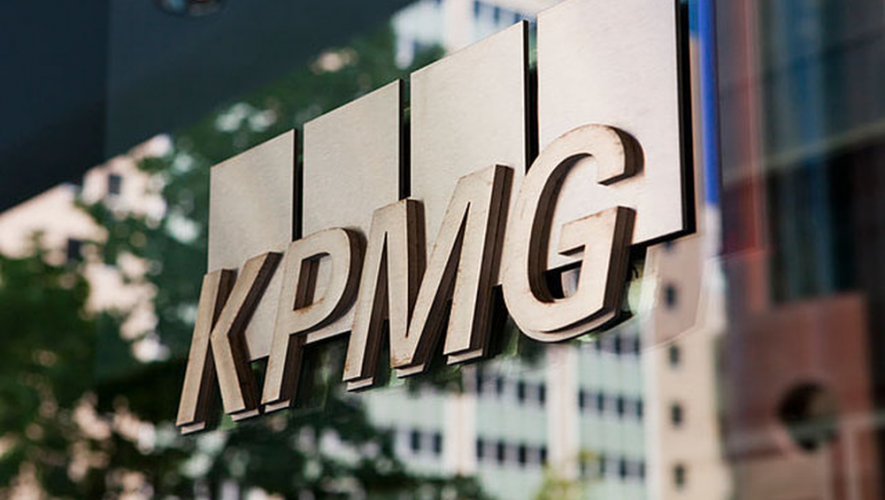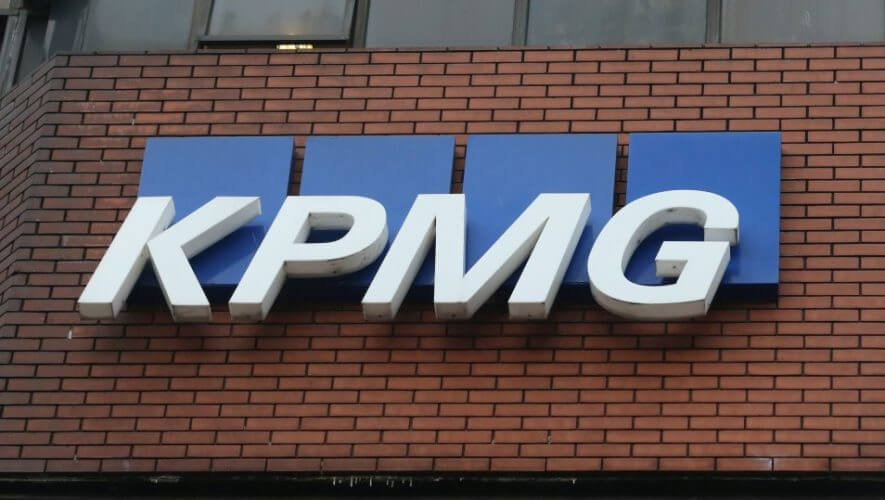“Project Zebra” strikes again. The London Evening Standard has the latest about the bloodletting going […]
Tag: Cost cutting
Layoff Watch ’19: KPMG U.K. Partners Fear the Zebra
KPMG U.K.’s better-late-than-never belt-tightening endeavor called “Project Zebra” is leaving carnage in its wake almost […]
KPMG U.K. Gives Its Cost-Cutting Plan a Stupid Codename
If Adrienne and I decide to do a second annual Going Concern Green Eyeshade Awards […]
Did Bands Play When KPMG U.K. Asked Employees to Hand Over Their Work Phones?
After Tabby Kinder of the Financial Times broke the story on Sept. 30 about KPMG […]
KPMG U.K. Is Getting Stingy
Today is New Year’s Eve in KPMG’s Universe, as fiscal year 2020 begins tomorrow. We […]
Are Big 4 Firms Getting Stingy?
The benefits to working for a Big 4 firm can be embarrassing sometimes. It’s just not things like weeks of PTO that you’ll never use or pet insurance, but also the day-to-day perks that come along with carrying the water for a behemoth professional services firm.
Toronto Protesters Have Some Choice Words for KPMG
Remember the cost cutting report that the KPMG presented to the City of Toronto? The one that said they should consider closing a few zoos, let the grass grow for an extra week and let the snow accumulate a few more inches before you they break the shovels out (despite the risk of more cracked tailbone lawsuits)? Of course you do. Yeah, well, some people aren’t crazy about it and figured camping out in front of the House of Klynveld with signs and a microphone seemed like a pretty good idea:
That’s right – Inhuman, bean counting purveyors of human misery and social retrogression. – I don’t even think I’ve heard Francine McKenna state something that incendiary.
Accountant Convinces David and Victoria Beckham That They Don’t Need Seven Gardeners
The Beckhams were concerned that “ordinary people were tightening their belts,” so what did they do? They fired a bunch of ordinary people! All it took was a shrewd accountant to tell them, “You’re pouring money down the drain.”
The fun-killing accountant is then quoted by a source in The Sun that employing 50 people around the word isn’t necessary, ” ‘You CAN afford to employ all of these people. But why the hell DO you?’ “
Vic took it to heart, so she cut 14 people off the payroll. This included a housekeeper that worked for them for eight years who was replaced by “two ‘cost efficient’ foreign staff,” so things aren’t completely falling apart.
As for the gardening, they’re down to one and now that poor bastard has to double as a chauffeur. Can you imagine the hell that must be having that guy track muddy shoes into the car? The horror.
Memo to CFOs: Layoffs, Frozen Salaries Don’t Always Save the Most Money
 Layoffs, pay freezes, pay cuts. Pretty simple cost cutting solutions for CFOs who’ve got tight budgets. Unfortunately, the slash and burn tactics for personnel may have been better applied in another area – inventory.
Layoffs, pay freezes, pay cuts. Pretty simple cost cutting solutions for CFOs who’ve got tight budgets. Unfortunately, the slash and burn tactics for personnel may have been better applied in another area – inventory.
A recent survey performed by Greenwich Associates of midsized and small company “financial decision-makers” found that, in particular, midsized companies ($10 million to $500 million in revenue) that reduced their inventory, on average, saved 30% more ($520k inventory vs. $400 layoffs).
While that’s great news, the unfortunate part is that only 17% of the companies survey bothered with that particular cost saving strategy while 47% of those survey used “staffing reductions.”
The survey also found that while 37% of used pay freezes to reduced costs with an averaged savings of $245,000. Crunching the numbers, that’s nearly 53% less savings than the inventory reduction savings.
Of course, not all companies have inventory in the dusty-stacks-of-pallets-in-a-warehouse sense. This is especially true of the professional services/financial services area where, unfortunately, the staff are sometimes considered to be inventory.
Cost Cutting Measure of the Day: Ditching Arial Typeface
This story is republished from CFOZone, where you’ll find news, analysis and professional networking tools for finance executives.
Looking for an easy way for your company to save a few bucks on office supplies? Change the font in the documents you print, reports the Associated Press.
The idea is simple enough: Certain fonts use different amounts of ink. That Arial font Word formerly defaulted to actually cost you money compared to using something like Century Gothic. For example, the University of Wisconsin-Green Bay has asked its faculty and staff to switch to Century Gothic for all printed documents. By doing so, the school figures it could save between 5 and 10 percent on its annual $100,000 ink and toner bill.
But such a switch could create more problems, because documents printed in Century Gothic tend to run longer than others. So while you may save on ink, you’re now getting smacked by bigger paper costs.
But it’s certainly interesting to think about how typography affects our business world. I highly recommend the documentary “Helvetica“, which explores arguably the most used typeface in Corporate America (think New York subway signs, American Airlines, AT&T and Jeep, among many others) and why we find it so appealing.
The AP story offers up a great example of how powerful type can be. In order to discourage people from printing too many documents, Microsoft even switched its default font from Times New Roman to Cambria for serif type and from Arial to Calibri for sans-serif.
The thinking? “The more pleasing a font looks on the screen, the less tempted someone will be to print,” the AP reported.
KPMG Survey: Cost Cuts May Not Be Sustainable
 This story is republished from CFOZone, where you’ll find news, analysis and professional networking tools for finance executives.
This story is republished from CFOZone, where you’ll find news, analysis and professional networking tools for finance executives.
Corporate executives have really gotten to show off their cost-cutting skills during the financial downturn and the ongoing, tepid recovery, as many have managed to push earnings up even as revenues sagged.
But, in looking forward, they have to wonder what cost those reduced expenses came at.
According to a survey released by KPMG on Wednesday, board members and senior executives are doing just that. Forty-five percent of the respondents expressed concern about the sustainability of the cost reductions undertaken by their companies in response to the economic crisis.
“Significant cost cutting can create a variety of risks to the business, both near- and long-term,” said Mary Pat McCarthy, KPMG Vice Chair and Executive Director of the Audit Committee Institute, in a press release.
In particular, two-thirds of those surveyed said they were most concerned about the impact of cost cutting on their company’s employee talent and training. Other concerns include the impact of cost-reductions on internal controls (36 percent), fraud risk (25 percent), management of outsourcing and supply chain (24 percent), financial reporting integrity (21 percent), and the Foreign Corrupt Practices Act and compliance issues (9 percent).
Some 13 percent of the respondents said their companies had not implemented significant cost reductions.
While previous recessions were characterized by short-term belt-tightening and a quick return to normal, KPMG noted that current cost reductions may be much longer-term, and possibly permanent.
The long-term nature of the cuts is understandable in light of the executives’ economic outlook. The survey found that 45 percent of respondents don’t expect the U.S. economy to reach pre-crisis growth in terms of investment, employment and productivity before at least 2013, and 22 percent said it would be beyond 2014.
Another 17 percent were particularly pessimistic, saying the economy would not see pre-crisis growth “for the foreseeable future,” while 15 percent said recovery could come in 2011. Just 1 percent said recovery could occur in 2010.
Similarly, in a separate response, 66 percent said American companies will not return to “business as usual” and will operate in this new environment through at least 2013.




